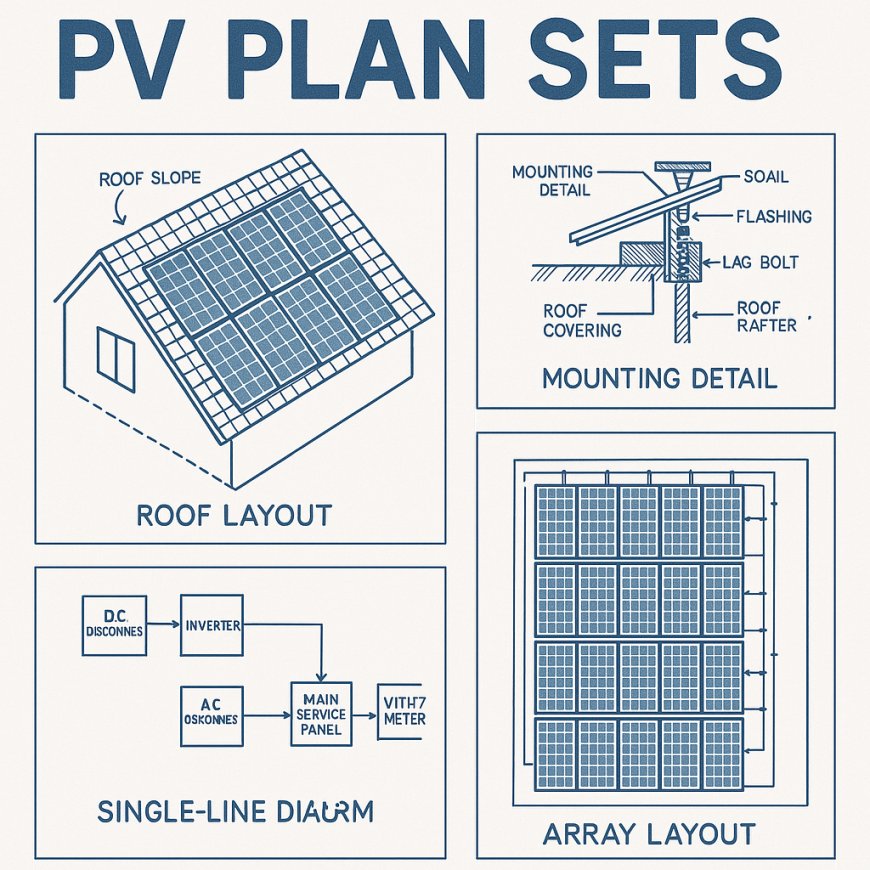PV Plan Sets: Requirements, Templates & Compliance Tips
A solar plan set is a bundle of drawings and data sheets that outline the details for a proposed PV system. Like blueprints for a home, PV plan sets are essential for ensuring a project goes smoothly, from building permits to passing inspections.

A solar plan set is a bundle of drawings and data sheets that outline the details for a proposed PV system. Like blueprints for a home, PV plan sets are essential for ensuring a project goes smoothly, from building permits to passing inspections. A standardized and streamlined plan set process can save you hours of rework, weeks of delays, and a host of avoidable headaches.
The components of a plan set vary depending on AHJ requirements, equipment configuration, and local building codes. But every solar plan set should include at least the following basics:
Electrical Plans
PV plan designs often require multiple electrical diagrams, which detail how power is delivered to different components. These can be as simple as a single-line diagram (SLD) or as complex as a full blown four-panel SLD. In addition, electrical plans must comply with AHJs adopted electrical codes and provide documentation such as schematics, wiring diagrams, circuit layouts, and a breaker diagram.
Mechanical Plans
PV installations must be designed to support the load of the array as well as any additional structural reinforcements needed. These plans typically contain wind and snow loads, as well as a full dimensional drawing of the array and mounting structure. These drawings are also required for obtaining a permit and must be signed off by a licensed engineer.
Engineering Calculations
A common requirement in PV plan sets is proof of calculations to show that the system meets design and code requirements. This can be as easy as providing a calculated ASHRAE comfort load, or it may require a detailed engineer's report with design equations and assumptions. This step is crucial for ensuring the correct and safe operation of the system.
Labels & Placards
PV installation plans must clearly indicate any hazards or warnings associated with a particular piece of equipment, including panel, inverter, or breaker locations and connections. This information is important for avoiding dangerous situations or delays in the permitting process, as well as making sure the installer is fully informed about the safety concerns related to each component of the system.
A final element of a PV plan set is the specifications sheet, which includes the technical specifications, dimensions, and manufacturer details for the equipment used in the project. This information helps ensure the accuracy of the equipment based on its specific performance, and provides verification that the equipment was chosen for the project based on the best available options.
For solar businesses, a complete and accurate plan set can be a huge time-saver. By ensuring that the plan set is complete and compliant, you can streamline the permitting process and get your projects into production faster. To learn more about how Aurora can help you streamline your solar plan set processes, schedule a no-hassle demo. We look forward to hearing from you!



































